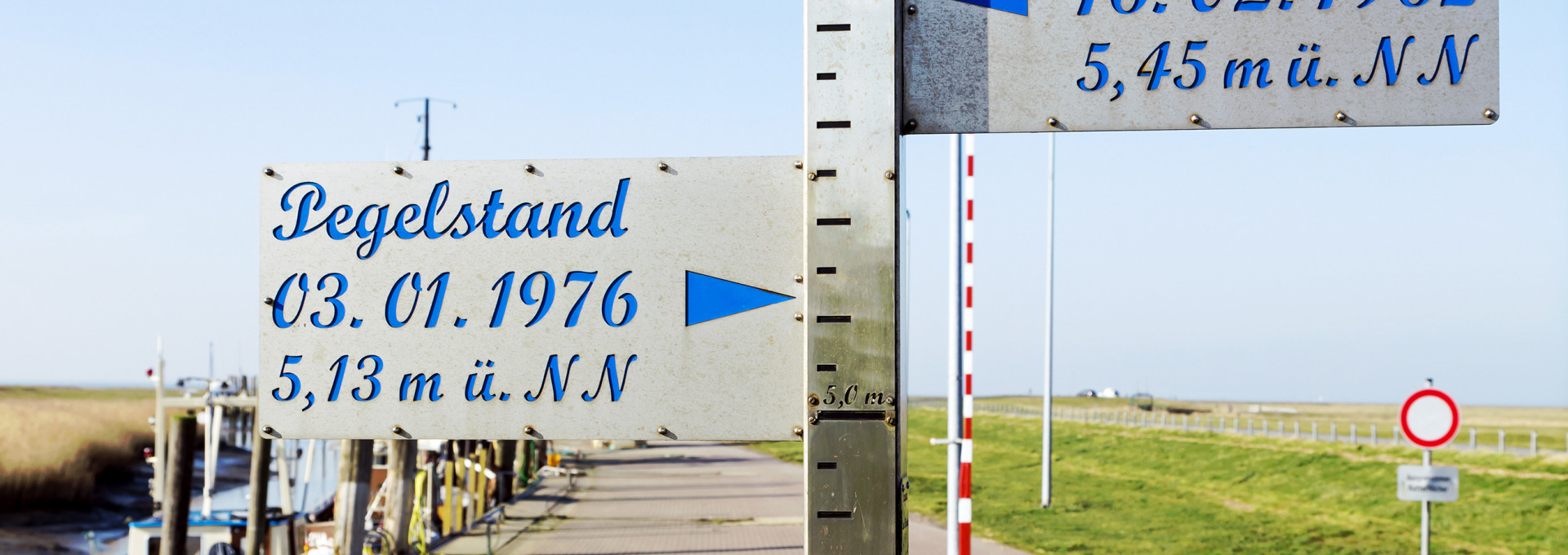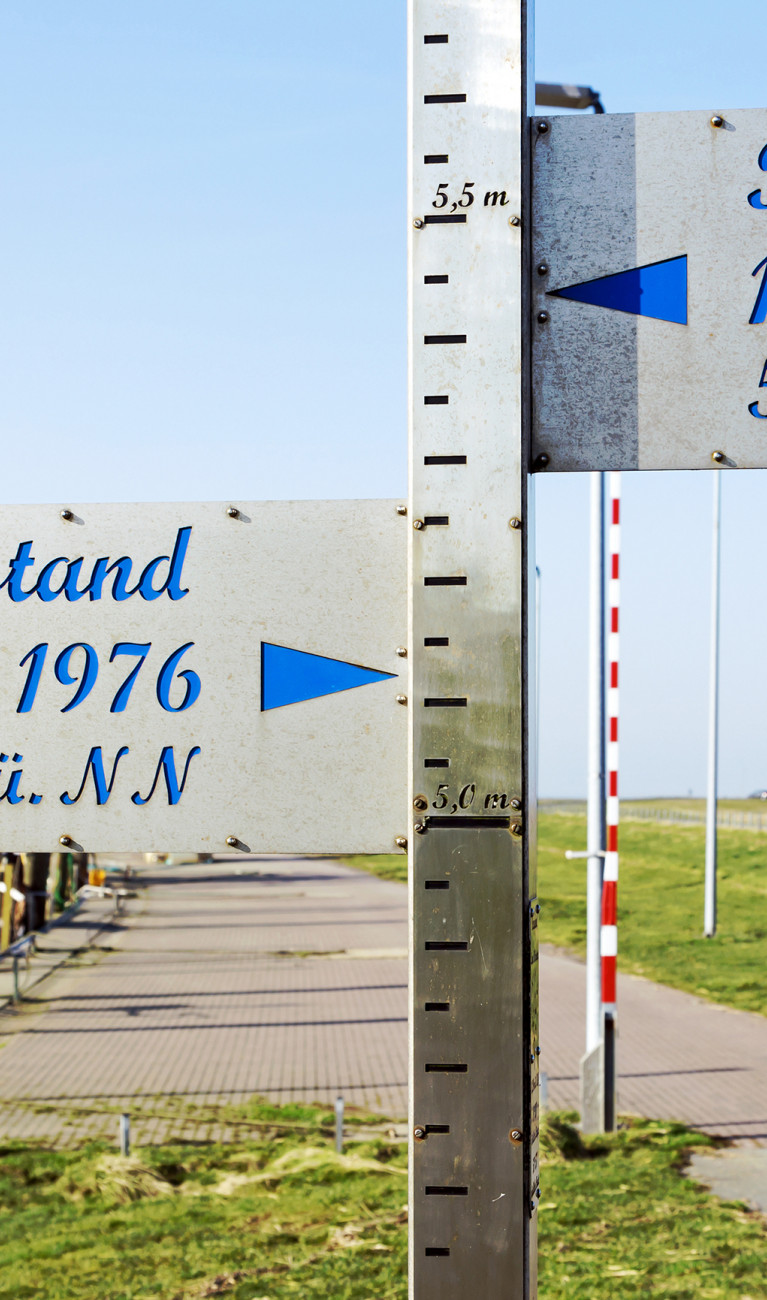



The global rise in sea level also affects the North Sea, which by 2100 could be a meter higher than it was a century ago. Dangerous storm surges will become more frequent as a result.
Ebb and flow are perfectly normal for the North Sea, but the sea level has been rising there independently of tidal cycles for decades – by 1.7 to 4.1 millimeters per year in the German Bight. That is partly due to climate change; the ocean expands as it gets warmer, and meltwater from glaciers is another factor. However, about half a millimeter of the sea level rise on Germany's North Sea coast is actually due to a decrease – that is how much the ground is sinking as a delayed effect of the last ice age.
The changing levels are already affecting the region now. Storm surges occur more often in some places. Although storm activity has not changed significantly thus far, the water now starts from a higher level, so it can reach critical levels more easily. If sea levels continue to rise, mudflats and salt marshes could be permanently flooded, impacting flora and fauna.
The sea level in the German Bight rose 15 to 20 centimeters in the past 100 years. It will rise another 30 to 80 centimeters or more by the end of this century, depending on how successful we are at stabilizing the climate. It will be essential to improve dikes and other protective measures accordingly.